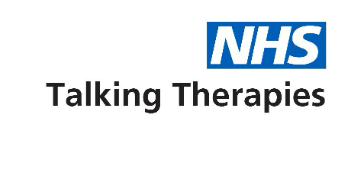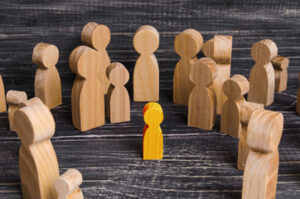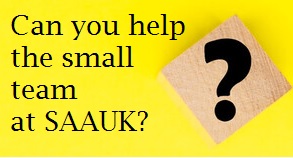| The aim of Social Anxiety Alliance UK (SAAUK) is to provide information and resources for individuals suffering from social anxiety as well as general information for the public. We promote understanding of the disorder and knowledge of appropriate and available treatment options, support and information, so that nobody is discouraged from seeking help. We will do this (among other things) by:
(1) collaborating with other UK mental health charities to develop an easily accessible range of social anxiety information and associated support services Further information about social anxiety can be found in the NICE publication on social anxiety disorder (2013): Social-anxiety-disorder-recognition-assessment-and-treatment-pdf Please note SAAUK is a recently established information and resource-based charity and is currently unable to offer specific therapeutic individual advice or support other than the information on the website. SAAUK does not currently have a helpline. Disclaimer : The Social Anxiety Alliance (Registered Charity Number 1195520) was formally registered on Monday 16 Aug 2021. |
Welcome to the Social Anxiety Alliance home page!
| Social anxiety involves an excessive fear of social situations. Sufferers will often fear being embarrassed, or worry about being negatively evaluated by others. Anticipatory anxiety and situational avoidance are common, and individuals may endure social situations with a high level of discomfort. The scope of the anxiety may be focused on specific types of social situations or generalised to almost any social encounter. |
What is social anxiety disorder?
While virtually everyone knows what it is like to feel self-conscious in some situations, those with social anxiety disorder suffer to an extent that can limit life opportunities and significantly affect mental and emotional health.

The anxiety experienced is often out of proportion to circumstances. It is something beyond shyness or a lack of social confidence. Feared situations are frequently so difficult that sufferers will avoid them or endure them under significant distress.
Sufferers worry about what others think of them or being the centre of attention. The technical definition in the DSM-5, a widely-used diagnostic manual for mental health disorders, states that social anxiety is a persistent fear of one or more social or performance situations in which the person is exposed to unfamiliar people or to possible scrutiny by others. The individual fears that he or she will act in a way (or show anxiety symptoms) that will be embarrassing and humiliating.
Fear of rejection is common as sufferers become hyper-focused on how they are appearing to others. They scan the room looking for signs of threat and disapproval, signs they might have slipped up and are at risk of rejection.
Having social anxiety can have a huge effect on your daily life. It may affect your self-confidence and self-esteem and can make you feel extremely isolated. It can make it difficult to develop and maintain relationships and can interfere with your ability to work and perform everyday tasks.
Those with social anxiety know that their anxiety is excessive and unwarranted but feel powerless to control it. The energy required to try to look, feel, speak and act normally can be exhausting. In fact, trying to control how they look and feel can exacerbate the symptoms they are trying hide.
With social anxiety it’s not quite as simple as just “Face your fears and they’ll go away”. People with social anxiety have constantly faced their fears – they’ve had to – but often the fear remains. Getting better usually works best as part of a comprehensive cognitive-behavioural approach, changing mutiple aspects of our thoughts, feelings and behaviours.

The good news is that social anxiety is becoming more widely known and there are now a large array online resources, online communities, self-help books, therapists, support groups and NHS Therapy that can help.
The National Institute for Health and Care Excellence (NICE) published guidance and made a series of recommendations to help those with social anxiety – please see NICE Social Anxiety Public Guidance.
NHS Cumbria, Northumberland, Tyne And Wear have produced a free PDF Social Anxiety – An NHS self help guide.
Situations that might be difficult
• small talk
• meeting people (including strangers)
• talking in meetings or in groups
• telephone calls
• lunch or coffee breaks with friends or colleagues
• starting or ending conversations
• eating or drinking while being observed
• preparing to enter a room or shop
• queues
• asking for help or refunds or making a complaint
Severe Social Anxiety
At the severe end of the spectrum people who experience social anxiety may find it very difficult to leave the home or to work. Children and young people with social anxiety may be unable to attend school. Severe social anxiety has the potential to impact every aspect of communication and interaction with others, such as speaking on the telephone, participating in video calls, sending emails, writing letters, or being watched or seen from afar. Selective mutism is an anxiety disorder where a person is unable to speak at all in certain social situations. See https://www.nhs.uk/mental-health/conditions/selective-mutism/.
Difference between social anxiety and shyness
Social anxiety disorder overlaps with shyness, but they are not the same. Please see our page on the difference between social anxiety and shyness.
What the NHS Offers
In May 2013 the National Institute for Health and Care Excellence (NICE) published guidance and made a series of recommendations to help those with Social Anxiety: NICE Social Anxiety Public Guidance
The first treatment you are likely to be offered is a psychological therapy called cognitive behavioural therapy (‘CBT’ for short). It should be a type of CBT that has been specifically designed to treat social anxiety disorder, usually the Clark and Wells Model named after the people who designed it. This is what you are likely to be offered on the NHS if you go to your GP.
See our page on What the NHS offers
Avoidance and safety behaviours
If you have social anxiety, you may go out of your way to avoid the situations you fear. Or you may use safety behaviours (for example avoiding eye contact or censoring what you have to say) in an attempt to avoid drawing attention to yourself or being judged. Avoidance and safety behaviours tend to maintain social anxiety, and therefore targeting them is an important part of recovery. Please see our page on the safety behaviours for more details.
Social Anxiety and the “Fight or Flight” response
The fight or flight response is an automatic physiological reaction to an event that is perceived as stressful or frightening. These responses were early evolutionary adaptations to increase chances of survival in threatening situations. Unfortunately, many with social anxiety develop threat systems which become over active, even in social situations that others find easy.
Please see our page on the ‘Fight or Flight’ for more details.
Common social anxiety symptoms and feelings
These can be split into four groupings :
Physical : • racing thoughts • blushing • feeling hot or sweating • trembling or shaking • disjointed speech • palpitations • tension in head, neck, or shoulders • inability to think of what to say
Behavioural : • avoidance • safety behaviours • poor eye contact • speaking too fast • being too quiet • leaving situations before things get worse
Emotional : • poor self esteem • depression • unassertiveness
Cognitive : • negative thoughts • negative beliefs
How many people have social anxiety disorder
Figures vary but the NHS NICE Social Anxiety Guidance (Full Guidance) comments “…it is clear that social anxiety is one of the most common of all the anxiety disorders. Lifetime prevalence rates of up to 12% have been reported (Kessler et al., 2005a) compared with lifetime prevalence estimates for other anxiety disorders of 6% for generalised anxiety disorder (GAD), 5% for panic disorder, 7% for post-traumatic stress disorder (PTSD) and 2% for obsessive compulsive disorder (OCD). Twelve-month prevalence rates as high as 7% have been reported for social anxiety disorder (Kessler et al., 2005b). Using strict criteria and face-to-face interviews in the US, the lifetime and yearly prevalence figures are halved to 5% and 3%, respectively”.
12% lifetime prevalence equates to 8 million people in the UK and even using the “3% stricter clinical criteria” (referred to above) there will be over 2 million people with social anxiety in the UK this year.
Further data is available at www.nimh.nih.gov/health/statistics/social-anxiety-disorder.
How many people seek treatment?
Despite the extent of suffering and impairment, previous research showed only about half of adults with the disorder ever seek treatment, and those who do generally only seek treatment after 15 to 20 years of symptoms (Grant et al., 2005a). However, now that awareness of the condition is evloving, and with NHS and other therapy available, the number seeking help is surely increasing.
How do I know if I have social anxiety?
Sufferers often know something is wrong. They may not know that there is a recognised condition called “social anxiety disorder” but they will usually be aware that they feel overly anxious in certain social or public situations. Please see our page on How do I know if I have social anxiety?.
How does social anxiety disorder affect people’s lives?
Social anxiety disorder is a spectrum. Some sufferers may live full working and family lives or may even reach the top of their profession, yet still struggle intensely in particular social situations. In more extreme forms social anxiety can prevent people even leaving their home when others might be around. They may have difficulty accessing work, healthcare, making friends or spending time with their own family.
Social Anxiety in children and teenagers
Please see our pages on children and social anxiety and teenagers an social anxiety.
The Causes of Social Anxiety Disorder
People may have social anxiety disorder for a number of reasons, perhaps involving a mixture of being more genetically predisposed to anxiety, but also as a result of their life experiences.
Social anxiety disorder has an early median age of onset (13 years) and is one of the most persistent anxiety disorders. Despite the extent of distress and impairment, only about half of those with the disorder ever seek treatment, and those who do generally only seek treatment after 15–20 years of symptoms.
See our page on the causes of social anxiety here.
Getting better
Getting better is completely possible. Although some techniques have more clinical evidence for their efficacy, there is also an element of individual trial and error. You should experiment and find the techniques that work best for you.
Be pleased with any progress that you make. Every journey begins with small steps, and it’s important give yourself credit for small wins, even if you think they are things that others find easy.
Some of getting better means accepting invitations to go places and do things that make you feel uncomfortable. Although it may be difficult, the growth, freedom and improved self-confidence that come from pushing through your fears will be worth it.
The good news is that there are many effective ways social anxiety can be reduced and treated. This website aims to provide information for sufferers and their families through links to online resources, online discussion boards, local support groups, social anxiety Meetup groups such as the London Shyness Group with 15,000 members, self help books, articles on how to make progress, and links to access NHS therapy.
An NHS Self Help guide
CLick below to access the NHS Self-help guide produced by Cumbria, Northumberland, Tyne And Wear NHS Foundation Trust
NHS Cumbria, Northumberland, Tyne And Wear Social Anxiety PDF – An NHS self help guide
Self-refer for NHS CBT
See the links in What the NHS offers
Disclaimer
The content in this resource is provided for general information only. It is not intended to, and should not be, treated as a substitute for the medical advice of your own doctor or any other health care professional.
Emergency Help
If you need urgent support, please contact the Samaritans 24 hour support line on 116 123 or see our Getting help in a crisis page

